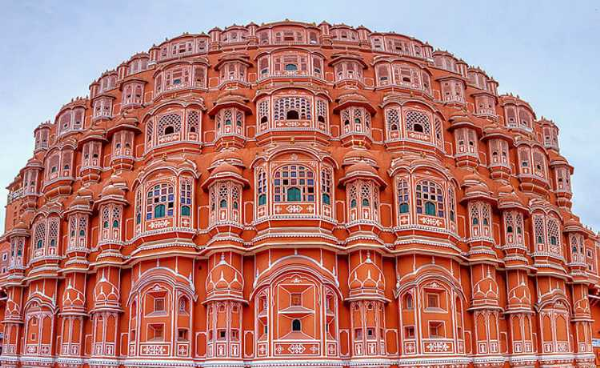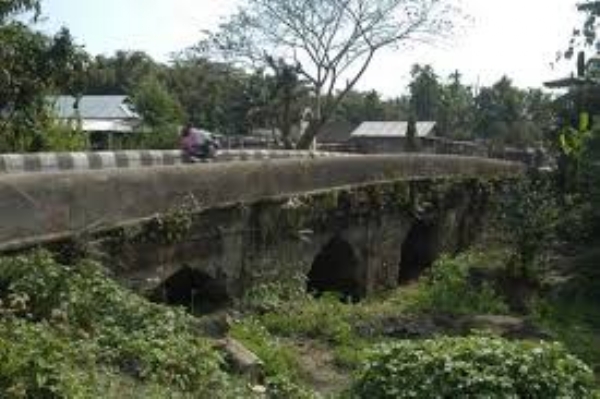These Engineering marvels of India are blend of science and culture...
India is celebrating National Engineers" Day today, on Sept 15, to remember the Engineering legend of the country Bharat Ratna Mokshagundam Visvesvaraya.
Total Views |
India is celebrating National Engineers' Day today, on Sept 15, to remember the Engineering legend of the country Bharat Ratna Mokshagundam Visvesvaraya. Received the Bharat Ratna in 1955 and earlier knighted as a Knight Commander of the British Indian Empire (KCIE) by King George V, M Visvesvaraya was the 19th Diwan of Mysore. The Krishna Raja Sagara dam in Mysuru city, Laxmi Talav Dam near Kolhapur in Maharashtra, and the flood protection system for Hyderabad city are Visvesvaraya's biggest contributions as he was the Chief Engineer for the first two projects and one of the Chief Engineers for the last project. On the occasion, let us head back in history and take a look at ten engineering marvels across India.

1. Kailasa Temple at Ellora Caves, Maharashtra
The Kailasa Temple located in Aurangabad's Ellora Caves in Maharashtra date back to 8th Century BCE, which is world's largest single rock cut temple. The construction of the Kailasa Temple is accounted to Rashtrakuta king Krishna I and depicts the architectural styles of Pallavas and Chalukyas. Based on archaeological evidence, it was concluded that over 400,000 tons of rock was cut, chiseled and carved from top to bottom for constructing the temple. Accountably, such humongous task that could easily require century worth of work is known to have completed in less than 18 years.
2. Barabar Caves, Bihar

The Barabar Hill Caves from Bihar's Jehanabad district are the oldest surviving rock-cut caves in India and date back to the Mauryan Empire. The caves in Barabar made by King Asoka were dedicated to followers of Ajivika sect founded by Makhali Gosala. Ajivika is a lost Indian religion originated during the era of Buddhism and Jainism. Ajivika was believed to be a major rival ideologically to Vedic philosophy and early phase of Buddhism and Jainism. On the top of the Barabar Hill, there is a Lord Shiva Temple, known as the Siddheswar Nath Temple, constructed by the Guptas during 7th Century AD. Besides, there are also two lakes, which attract over 15 varieties of water birds and thus is a famous location for nature admirers.
3. Rani ki Vav, Gujarat

'Rani ki Vav' is one of the oldest and finest stepwells in Gujarat, located on the banks of the Saraswati River. The steps of the well lead down through multiple levels with lines of carved pillars and more than 800 sculptures, mostly on Vishnu-avatar themes, as well as striking geometric patterns. The stepwell is made in the form of an inverted temple. It resembles the unique Maru-Gurjara architectural style. A 1304 composition of Jain monk, Merutunga, mentions that Rani Udayamati, the daughter of Naravaraha Khangara, and consort of Bhimdev I built the stepwell at Patan. The stepwell has been listed as one of UNESCO's World Heritage Sites since 2014.
4. Hawa Mahal, Rajasthan

Hawa Mahal was built in 1799 CE by Maharaja Sawai Pratap Singh in Jaipur and was designed by Lal Chand Ustad. Built in Red and Pink Sandstone, 'the Palace of winds' has 953 windows in all that keep the palace highly ventilated. But the biggest wonder here is that the Hawa Mahal was built without foundation. It is world's tallest building that has no foundation. The five-storey building has managed to maintain upright because of it is curved shaped. It is believed that since the royal ladies were not to be seen in public, the palace was built such that the women can watch festival celebrations and all other activities on the street without being seen. Besides, the windows allow breeze to flow through the palace and help to keeping it cool, thus making it an ideal 'Summer Palace'.
5. Pataleshwar Caves, Maharashtra

The Pataleshwar Cave Temple from Maharashtra's Pune is devoted to the Lord Pataleshwar, the God of the Underworld and dates back to 8th Century, CE. The view of the temple suggests that the Pataleshwar Cave Temple has been carved out from a single rock. The cave temple has huge pillars, adding on to its magnificence. The construction of the Pataleshwar Cave temple was inspired by the Elephanta caves in Mumbai, but was left uncompleted.
6. Masroor Rock Cut Temple, Himachal Pradesh

The Masroor Temples, also referred to as Masroor Temples or Rock-cut Temples at Masroor, is an early 8th-century complex of rock-cut Hindu temples in the Kangra Valley of Beas River in Himachal Pradesh. The temples are a version of North Indian Nagara architecture style. Though a major temples complex in the surviving form, the archaeological studies suggest that the artists and architects had a far more ambititious plan and the complex remains incomplete. Much of the Masroor temple’s sculpture and reliefs have been lost. They were also quite damaged, most likely from earthquakes. The highly active seismic zone of the Himalayas prove it to be an engineering marvel that the temple complex dating back to the 8th century CE has survived for so long.
7. Castle of Sani, Ladakh

The Sani Monastery, that belongs to the Drukpa Kagupa order, is believed to be the oldest Ka-ni-ka monastery in Zanskar. The monastery is said to have been built in phases, each part dating to a different century. The chorten is believed to have been erected in the 2nd Century, while the dukhang in the 17th Century. Unlike most Ladakhi monasteries, the Sani Monastery is built like a castle on flat ground, making it more accessible than most others. There is a stupa in the backyard of its walled complex.
8. Namdang Stone Bridge, Assam

The Namdang Stone Bridge in Assam was constructed by Ahom king Rudra Singha in 1703 and is made up of a single stone. The stone bridge on Namdang River was constructed by a craftsmen of Bengal. This bridge is one of the magnificent structures built under the patronage of the Ahom kings. Namdang is one of the ten stone bridges built by the Ahom kings. Being a Himalayan construction, the bridge has faced several natural calamities like earthquake and flood and yet it stands still even today. Presently National Highway 37 passes over the stone bridge, taking loads of tonnes of vehicles everyday.



